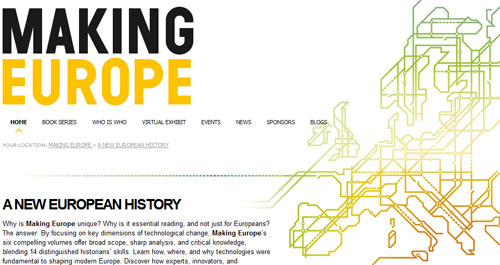
“Inventing Europe is a pioneering collaborative project in which historians and cultural heritage institutions throughout Europe together tell a new kind of history of Europe. Following the paths of technology from the transport and communication revolutions of the Nineteenth Century through to the present day, in the course of half a year the project will realize an online exhibition that shows to a wide range of users the ways technology has shaped Europe – and the ways Europe has shaped technology.
Based on research from the six-part book series Making Europe: Technology and Transformations 1850-2000 the virtual exhibit explores the broad themes of globalization, consumption, communication, infrastructures, knowledge societies, and governance. It seeks to make its results available to a wider audience by drawing on the rich and growing online collections of museums, archives and libraries throughout Europe and beyond.”
The exhibit, developed at Imperial College, London, will allow participating museums to share relevant content from their online collections quickly and easily. These appear as related content next to the objects within the exhibit, and serve as a portal for further exploration on the web. Click here to access the prototype exhibit: “Europe, Interrupted”.









